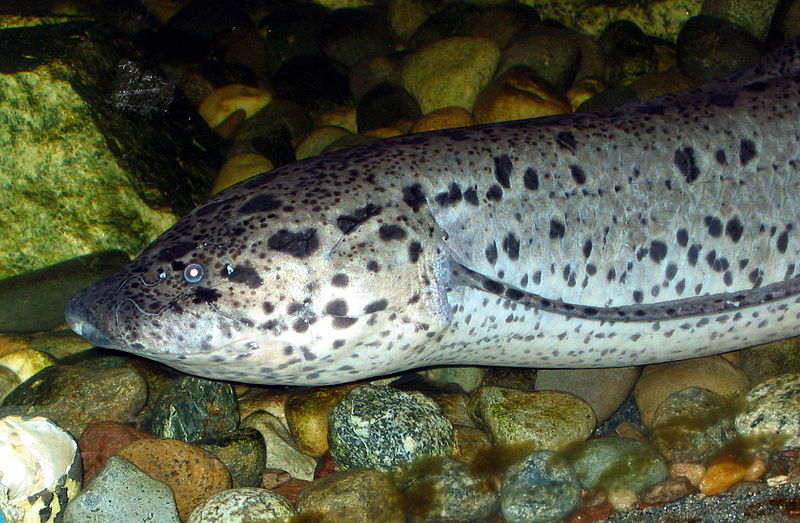 Hello, Frank Indiviglio here. Capable of surviving up to 4 years without food and water and unchanged since the time of the dinosaurs – Lungfish facts read like fiction. Please see Part 1 of this article for information on the natural history of African, Australian and South American Lungfishes. Today we’ll review their care in the aquarium.
Hello, Frank Indiviglio here. Capable of surviving up to 4 years without food and water and unchanged since the time of the dinosaurs – Lungfish facts read like fiction. Please see Part 1 of this article for information on the natural history of African, Australian and South American Lungfishes. Today we’ll review their care in the aquarium.
Lungfishes in the Aquarium
The West African Lungfish (Protopterus annectans annectans) is the species most commonly available in the trade. It and the other African Lungfishes make excellent captives if you can provide the huge aquariums they require; longevities commonly exceed 30 years.
The continued survival of the Australian Lungfish is severely threatened by development around its tiny range in southeastern Australia. It is strictly protected by the Australian government, but licensed breeders (who utilize outdoor ponds) do produce a small number of offspring for the trade. They are very expensive, but the experienced aquarist with a great deal of space can ask for no more bizarre or interesting creature; an Australian Lungfish at the Shedd Aquarium is still going strong in its 70s (please see video below).
Diet
In common with other fishes adapted to environments where the food and water supplies fluctuate wildly, lungfishes are voracious feeders. They are carnivorous in nature, although I was amazed to see Australian Lungfishes at Japan’s Enoshima Aquarium enthusiastically munching on plantain! All species should be provided a varied diet of fish, insects, earthworms and frozen meat and fish-based foods. Many readily adapt to pellets formulated for carnivorous tropical fishes, but whole animals should be their mainstay.
Despite their propensity to hide, once acclimated to the aquarium lungfishes will readily leave their retreats at feeding time.
Environment

Most fare best in soft, neutral or slightly acid waters at temperatures of 77 F, but they are remarkably tolerant in this regard. They should not, however, be subjected to rapid changes in temperature, pH or other conditions. Captive breeding is not common. In all but the Australian species, the male constructs a nest or breeding burrow and steadfastly guards the eggs from predators.
Further Reading
Website of an Australian Lungfish breeder with interesting info and videos (including a video of an albino specimen).
Video of the Shedd Aquarium’s long-lived Australian Lungfish.
Please write in with your questions and comments.
Thanks, until next time,
Frank Indiviglio
African Lungfish face image referenced from wikipedia and originally posted by Chris Stubbs
 That Fish Blog – Aquarium Advice and Information
That Fish Blog – Aquarium Advice and Information

